When I first moved into my apartment, I found myself yearning for a slice of nature to soften the harsh concrete jungle that had become my new home. This is when apartment gardening for beginners became more than just a passing interest. I quickly discovered that finding solace in nature doesn't require a vast expanse of lawn or garden; even the smallest apartment can be transformed into a lush, green space bursting with life.
As an apartment dweller, gardening became my escape from the hustle and bustle of daily life. Not only does it offer me picturesque nooks to enjoy my early morning coffee but also serves as the perfect outlet for creativity and meditation. With each new plant, pot, or arrangement, my once-bland balcony has now become a serene sanctuary accentuated by life's simplicity.
Join me on this journey and dive into the world of urban gardening with me! Here, I'm going to share fundamental tips and techniques that helped me create an enchanting oasis in my humble abode. With just a few simple steps, you too can enjoy the fruits (or vegetables) of your labor all while fostering a fresh connection to both your environment and yourself.
Contents
As a city dweller with limited outdoor space, I was initially skeptical about the feasibility of apartment gardening. But with persistent curiosity and a bit of research, I eventually discovered that not only is it possible to incorporate greenery into smaller abodes - but it can also be incredibly rewarding and enjoyable. Through trial and error, I've learned invaluable tips and tricks that have eased my journey into urban horticulture.
Below I'll share insights on how to grow a garden in an apartment. You'll learn how to utilize your limited space effectively, select appropriate plants for indoor or balcony displays, and create an oasis of green in your home despite the bustling city landscape.
Let's delve into the fascinating world of apartment gardening—exploring diverse plant options, container styles, and nurturing strategies to help you cultivate your very own verdant haven within your urban sanctuary!
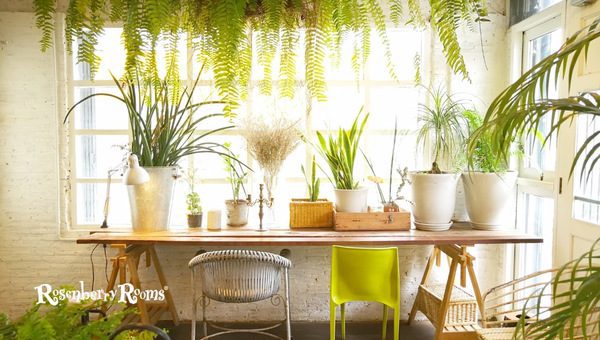
Finding the perfect spot for your apartment garden can be a delightful puzzle. With a little creativity and keen observation, you can carve out a green oasis within your living space.
By harnessing natural light, utilizing the architectural features of your apartment, and selecting appropriate plants, your apartment garden will soon become a lush sanctuary bringing life into your home.
Natural light is crucial for my plant babies to thrive. I made it a point to observe how sunlight interacts with my apartment throughout the day.
Tracking sun exposure and intensity helped me determine which rooms and corners received adequate light for various plants. Pay special attention to south-facing windows or skylights, as these usually offer ample sunlight.
Balconies are a popular choice for apartment gardens as they often provide direct sunlight and fresh air circulation. However, not every apartment comes with one! In such cases, windowsills make excellent alternatives for small potted plants or window boxes.
Besides these traditional gardening spots, I learned to utilize vertical spaces like walls or trellises where hanging baskets or vine-like plants could flourish–fully maximizing every square inch of available space!
Different plants have varying light requirements; it's essential to match them with their preferred lighting conditions to ensure healthy growth.
I grouped my sun-loving plants near bright windows or balconies while opting for shade-tolerant species in dimmer areas. This approach keeps my greenery happy while adding visual depth to my garden design.
When natural light is scarce due to limited window access or structural shade from nearby buildings, artificial lighting comes in handy! To simulate sunlight indoors, I invested in grow lights—particularly LEDs that emit full-spectrum light—to save on energy costs while promoting plant growth.
I placed the lights above my plants, ensuring adequate lighting coverage and adjusted the duration of exposure based on each species' specific needs. This solution ensures that my apartment garden stays vibrant even in less-than-ideal conditions.
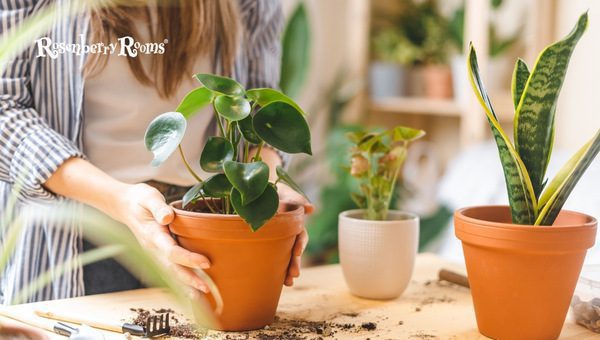
A well-chosen container can immensely impact the overall aesthetics and health of your apartment garden. When selecting containers, it's crucial to consider factors such as size, drainage, and materials.
By playing around with various options, you'll create a captivating and functional garden that complements your apartment's style while providing a nurturing environment for your plants.
A wide variety of container types are available. Standard pots come in multiple sizes and shapes, allowing you to choose the perfect one for each plant species. Hanging baskets create an eye-catching display while also utilizing vertical space efficiently.
Alternatively, consider installing window boxes that maximize sill utilization and add charm to exterior views. Get creative with arrangements in your apartment garden by combining these various options!
Good drainage is essential to prevent root rot and other water-related issues in plants. I always make sure my containers have drainage holes or use containers designed explicitly for plant growth.
Selecting the right container size is crucial for accommodating root growth without overcrowding or tipping over from top heaviness. I consult recommended pot sizing guidelines for individual plant species to ensure they have ample space to grow steadily.
Containers made from different materials offer unique benefits and considerations:
By understanding the pros and cons of each material, you can make informed choices that will contribute to the overall success of your apartment garden.
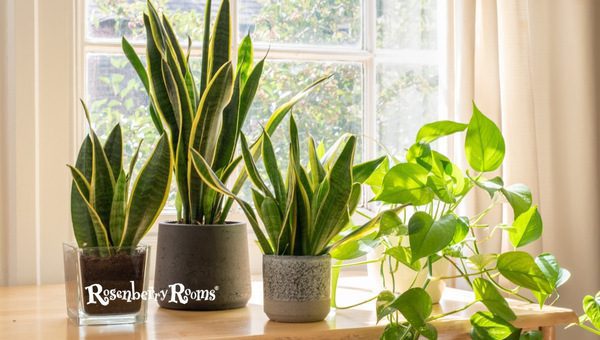
Selecting the ideal plants for my apartment garden involved considering my living space conditions and personal lifestyle. With careful planning, I chose the right mix of indoor and outdoor plants to create a vibrant and lush green haven that serves both decorative and functional purposes.
I learned that some plants tolerate or even prefer an indoor environment. For example, many tropical species such as pothos (Epipremnum aureum) and snake plant (Sansevieria trifasciata) come from naturally humid habitats, making them well-suited for our cozy homes.
A busy schedule necessitated low-maintenance plant options. Succulents, cacti, ZZ plants (Zamioculcas zamiifolia), spider plants (Chlorophytum comosum), and snake plants quickly became my favorites due to their minimal care requirements while still adding life to my space.
When choosing between edible or decorative plants, I found that each has its merits. While decorative plants like ferns or spider plants purely serve aesthetic purposes – making any space colorful and inviting – edible varieties, like herbs or vegetables, can significantly reduce grocery expenses while ensuring a fresh produce supply at home.
Indoor apartment gardens can be just as colorful, vibrant, and varied as their outdoor counterparts. In my experience, some of the best flora for indoor cultivation include pothos (Epipremnum aureum), snake plant (Sansevieria trifasciata), and jade plant (Crassula ovata).
Each offers unique aesthetic benefits while requiring minimal care. By combining plants with varying foliage textures, colors, and heights, I've been able to create an engaging interior garden that delights the senses and enlivens my living space.
Air-purifying Plants: Air-purifying plants, such as peace lilies (Spathiphyllum), Boston fern (Nephrolepis exaltata), and spider plants (Chlorophytum comosum), effectively remove toxins and improve air quality. These green companions add aesthetic value while maintaining a healthy home atmosphere.
Edible and Medicinal Plants: Having edible and medicinal plants like aloe vera and mint at your fingertips can be quite rewarding. They save money, provide organic produce, and serve as natural remedies for various conditions.
Green Salad: Cultivating salad ingredients in my apartment garden, such as lettuce or arugula, allowed me to enjoy fresh greens daily without worrying about space-consuming plants.
Low-light Plants: Plants that tolerate low-light conditions include cast-iron plant (Aspidistra elatior), heartleaf philodendron (Philodendron hederaceum), and ZZ plant (Zamioculcas zamiifolia). These species make great additions to rooms with limited natural light.
Leafy Green Plants: Leafy green plants like Swiss chard or spinach not only provide valuable nutrients but also bring visual appeal by adding vibrant shades of green to an indoor garden.
Herbs: Growing herbs like basil, parsley, thyme, or rosemary adds flavor to your dishes while making your home smell delightful.
Other Suitable Indoor Plants: Other well-adapted indoor plants include Chinese evergreen (Aglaonema spp.) and dracaena (Dracaena spp.), which create attractive foliage displays with minimal maintenance requirements.
A balcony or terrace may be a small space, but it can still house a verdant and flourishing outdoor garden. Some favorite plant options that withstand harsher weather conditions include the perennial geranium (Pelargonium spp.) or hardy petunia (Petunia spp.), providing stunning bursts of color throughout the growing season.
With well-planned placements in containers or hanging baskets, these species brighten any outdoor living area while being relatively low-maintenance—perfect for busy city dwellers like me who still yearn for a touch of nature outside their apartment windows.
Opting for evergreen balcony plants like boxwood (Buxus sempervirens) or dwarf conifers (Picea spp.) can provide year-round greenery without requiring excessive care or frequent pruning. These plants add structure and privacy to outdoor spaces.
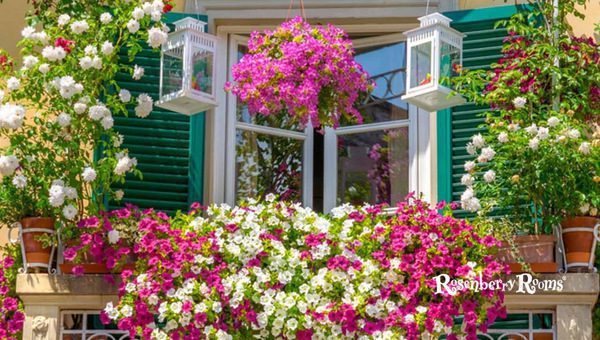
Flowers bring color and vibrancy to any garden, regardless of its size. When cultivating flowers in an urban apartment garden:
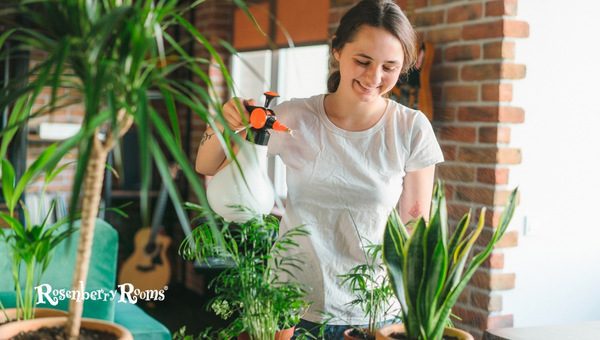
Establishing a consistent watering routine has been crucial for keeping my apartment garden flourishing and healthy. Proper hydration can make all the difference in your plants' overall well-being – from encouraging lush growth to preventing disease.
With a little experimentation and observation, I was able to design an efficient schedule that addressed each plant's specific needs, ensuring they stayed vibrant and thriving.
Each plant species has unique watering requirements, which depend on factors like humidity levels, light exposure, and the size of their pot. To better understand individual needs, I researched each plant online or consulted gardening books.
I also paid attention to my plants' reactions (e.g., wilting leaves, yellowing foliage) to specific conditions and adjusted their water regimen accordingly.
Overwatering can lead to root rot and other issues, while underwatering can cause wilting or stunted growth. To strike a balance between these two extremes:
Incorporating my plants' hydration needs into my daily routines was essential; this ensured consistent care while preventing neglect during busy periods.
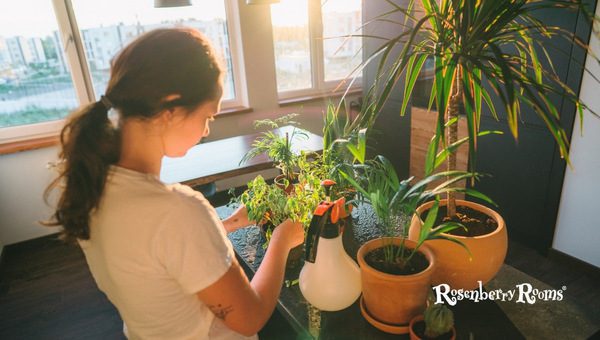
Providing my apartment garden with the appropriate nutrition has been fundamental in maintaining its overall health and vibrancy. By experimenting with various fertilizers, monitoring their effects on plant growth, and learning to recognize the symptoms of over-fertilization, I have created a thriving space that thrives under my care.
I researched and experimented with both organic and synthetic fertilizers to understand their advantages and limitations:
I ultimately chose organic fertilizers to provide nutrients while maintaining environmental responsibility.
Understanding each species' unique nutrient requirements helped me form a diligent fertilizing routine. By consulting care guides or observing plant cues like reduced growth or yellowing leaves, I tailored my fertilizer application accordingly–striving for optimum plant health without overwhelming them.
Over-fertilization can harm plants by causing nutrient burn or disrupting soil chemistry. To avoid such scenarios:
By nourishing your apartment garden with proper nutrition, you can foster a thriving ecosystem full of lush foliage, visually stunning blossoms, and abundant harvests!
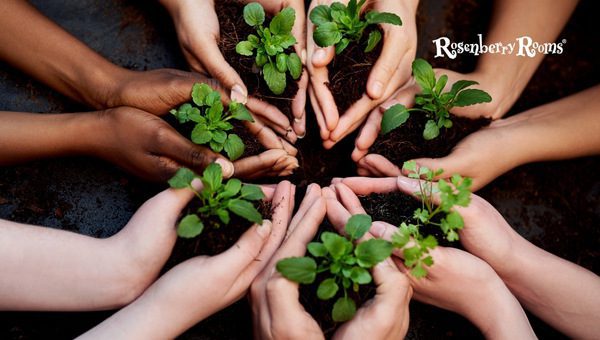
An essential aspect of apartment gardening is keeping my plants in good health while ensuring they remain free of pests.
While it may seem intimidating at first, adopting proper care practices and implementing effective pest control measures have helped maintain a vibrant and thriving garden, allowing me to enjoy all its benefits without the stress of pest-related issues.
In their search for sustenance, even indoor plants can fall prey to pests like aphids, spider mites, or fungus gnats. When these unwelcome visitors made an appearance, I researched safe treatment options tailored for each specific pest:
Following simple yet effective preventive measures has worked wonders in keeping harmful pests out of my apartment garden:
Healthy plants can better fight off and recover from pest attacks compared to stressed ones. By adopting good plant care habits:
Through these simple yet efficient methods, I managed to create a resilient apartment garden that remains pleasantly free from harmful pests while providing me with a lush, leafy haven to enjoy.
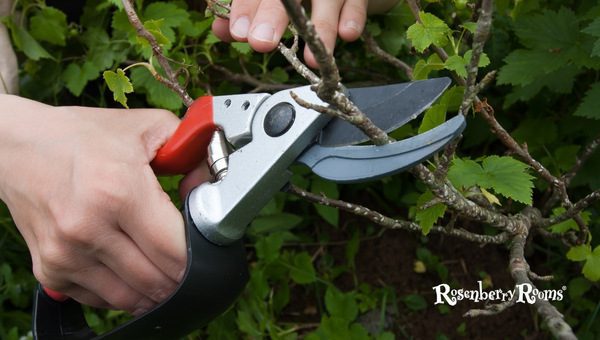
Pruning and harvesting not only enhance the aesthetic appearance of my apartment garden but also contribute to the overall health and productivity of my plants. By properly pruning and timely harvesting, I can ensure bountiful yields while keeping my green friends looking their best.
Pruning involves selectively removing dead, damaged, or overgrown branches to encourage desired growth patterns. Key benefits of pruning include:
The ideal time for pruning depends on plant species; generally, it is best done during periods of slow growth or dormancy.
Each plant comes with its unique pruning requirements:
Checking specific recommendations for each species in your garden will ensure optimal results.
To maximize your edible plants' productivity while maintaining their health:
By following these practical tips, I’ve experienced abundant yields while maintaining an aesthetically pleasing apartment garden – a true testament to the rewards of attentive care!
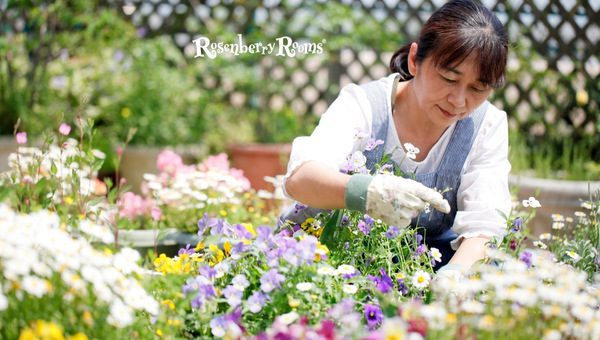
Apartment gardening may seem like a small step, but its impacts can be far-reaching. The importance and benefits of apartment gardening permeate various aspects of our lives, including promoting better health, supporting urban food movements, and reconnecting with nature.
Let's take a closer look at the many advantages that can be gained through this simple yet transformative practice.
Indulging in apartment gardening has several health benefits. Here are some significant ones:
Growing edible plants like herbs, vegetables, or fruits fosters self-sustainability and encourages urban dwellers to indulge in organic produce. Having homegrown produce can lead to healthier meal choices while reducing your carbon footprint by decreasing dependency on long-distance food transportation.
Spending time tending to plants reconnects us with nature on a fundamental level. This intimate process allows us to witness growth from seedlings to blossoming wonders physically.
It also fortifies our understanding of essential environmental factors affecting plant life such as light, temperature, soil composition, etc., widening our perception beyond purely aesthetic concerns.
Specific apartment-friendly plants possess healing properties. For instance:
Plants convert carbon dioxide into oxygen through the process of photosynthesis. By creating green spaces within your apartment, you're actively combating climate change by absorbing carbon dioxide and producing clean, breathable air in return.
Apartment gardeners can handle waste more ethically by composting kitchen scraps and converting them into nutrient-rich compost for plant growth. This closed-loop system significantly reduces waste generation and fosters mindful consumption practices.
By growing a diverse range of plant species in your apartment, you contribute to preserving biodiversity in your community. This variety supports pollinators like bees and butterflies, which aid in plants' fertilization processes in your living space.
It's easy to get started with apartment gardening as it requires just a few basic items:
With persistence and patience, anyone can experience the wonderful benefits associated with apartment gardening!
Yes, absolutely! You can utilize windowsills, vertical spaces, or indoor areas with sufficient light to create a lush indoor garden perfect for your apartment.
Look for plants with low-light tolerance or those that thrive indoors like pothos, snake plants, and peace lilies.
Consider factors like size, drainage, and materials (such as ceramic, plastic, metal, or wood) when selecting containers.Consider factors like size, drainage, and materials (such as ceramic, plastic, metal, or wood) when selecting containers.
Develop a consistent watering routine tailored to each plant's specific needs by checking soil moisture levels and adjusting accordingly.
Yes! Use methods like neem oil sprays, yellow sticky traps, or introducing predatory insects to keep pests at bay organically.
Pruning frequencies vary depending on the plant species – consult specific recommendations for each plant to ensure optimal results.
Yes! Many edible plants and herbs like basil, parsley, lettuce, or spinach can be grown in pots inside your apartment.
Utilize vertical spaces creatively using hanging baskets or trellises while exploring various container options such as pots and window boxes.
Apartment gardening has been an incredibly rewarding journey that transformed my living space into a verdant oasis, despite the challenges of limited room and fluctuating light conditions. By harnessing natural light, selecting suitable containers, choosing the right plants for my space, and practicing consistent care routines like watering and pruning, I have successfully cultivated an indoor sanctuary that provides nourishment, clean air, and endless visual delight.
I encourage anyone considering apartment gardening to take the plunge! It may require some creativity and flexibility, but with research-backed practices and perseverance, you can create a beautiful garden that reflects your personality while enhancing your apartment's atmosphere.
Embrace the process as an opportunity to learn from personal experiences – adapting along the way – so you can fully enjoy the fruits of your labor while sharing your green refuge with friends and family who visit your thriving urban haven.